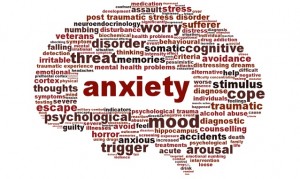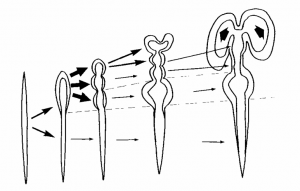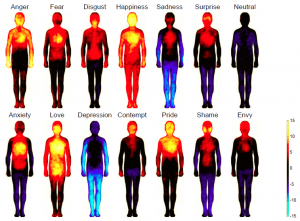Quick base from the AoS method
Affairs of the State primarily focuses on getting insight on the following 5 fields:
- Politics/moral (want/need)
- Weather/external natural aspect (Emotional confrontation by self or other)
- Terrain/support (time/space obstacles)
- Leader/commander (You choose to address something)
- Doctrine/discipline (You set way-points and follow them to the letter)
Definition disposition
Before we attack the anxieties, a little about where they come from.
Here is a link to the Medical News Today, about anxiety.
The link will tell you exactly what I would say. You might wonder, whether it would be even productive to go into such a diverse and complex matter. The simple answer is: Yes. Why so? Because knowing brings understanding. Understanding brings knowing. IE. You can learn a great deal from looking into it. Both about yourself and a lot of other things.
A quick resume: Anxiety is a plethora of behaviors that cause emotional and physical stress, either by impulse/stimuli from a certain situation, a certain train of thought/memoryset or an internal chemical imbalance.
Address of fear
Finding the five fields within a specific anxiety, would require first the anxiety to be ‘clearly defined’. This seems logical and simple, but of course it is not. A person responding with heightened heartrate from a view of a street doesn’t automatically falls within the borders of Agorafobia. Nor does one who feels totally drained by a group of people automatically fall within Enochlophobia. Though they are the primary targets to see if the symptoms match, so an initial treatment can be selected, it is very important to often seek beyond the ‘obvious’. If human behavior was ‘obvious’, we would have completed understanding ourselves already centuries ago.
The problem often is, that people will use old ‘medical’ steps to define newly found/understood disorders in human nature (behavioral/experience) or a human being (physical). The DTM takes research done, based on old medical research, but then start from scratch, with rational reduction as base. The human experience is based on the interpretation of sensory input that we inherited from ancestors without the cognitive awareness of them. It is important to realize this, because it explains why human behave in certain ways and why researching how animals behave (taking that they are within the ancestral tree of humans regarding such behavior) is important for understanding ourselves.
In the above figure, you see from left to right, the evolutionary path from single cell organisms to dinosaurs and eventually humans. Though they all seem like either separate species, actually they never were. Slowly over the course of numerous generations, one turned into the other. parts of the organism changed, added, or lost functionality. Some lines went extinct. Some lines diversified. Just like your own family. Your grandma and grandpa had more than one child probably, and each of those got their own family, some with deficiencies, some with increased ‘functionality’. Those with deficiencies are often to have less possibility to survive (though in modern days we have medicine to solve many issues. And create new ones, true). Increased functionality often gets spurred by the environment, but just as likely can be an accidental genetic change.
Plato…or Plateau?
Each generation is a little different from that before. As far as we know now, before the moment of major diversity in species, there was the great Cambrian phase, where the amount of food and species were in balance and growth was possible without any environmental force to change the species. Likely when a sudden change in environment happened, the limited diversity in species was challenged and caused an explosion of species. This wasn’t like one day there was three species and the next day all three made two thousand. Just in a shorter period of time, different ‘cultures’ of microbes started to mutate to survive shortcomings in either protection from other species, food scarcity or environmental dangers.
How does this help understanding anxieties?
First off, the chemical balance in our body, is one of the oldest systems in organic life. The cells we are made up of, are based on the singular celled lifeforms millions of years ago. These lived solely on the changes in chemical balances. Heck, the even exist because the concentrations within and around proteins caused them to fold into themselves, causing them to become more and more complex processes until they were what we call ‘life’.
It’s Chemistry
Chemical deficiencies cause erratic behavior in cells. They cause deformity and malfunctions. In systems with different combined cell types and changing/dependent concentration regulation, they cause discrepancies between parts of the system, making (again) either each other or within itself on cellular level, deform or malfunction. These malfunctions can be such that change in concentration of minerals or other pH changes, can cause the systempart to overproduce or abundantly attract fluids. This didn’t change anywhere in the evolutionary track. How do we know? Because we recognize the systems that are evolved from earlier systems, and still respond in the same way to altered stimuli or situations.
Not neurotic
Secondly, neurological importance. As our nervous system evolved from way before the mammal evolutionary diversion, the way it responds to the most basic needs, fears and changes, are important to understand. The automatic retraction of a worm is no different than the instinctive pull to fetal pose in sense of imminent and lethal danger of a mammal, even a human. Recognizing these cause and effects, can help determine on which level a person is influence by a neurological deficiency or malfunction.
Don’t get emotional
Thirdly, though not the last, it is the last we will address right now, is the emotional influence. As the DTM theory explains, we behave on three levels. Instinctive, emotional and cognitive. The fist two influences/systems mentioned above, are genetically caused instincts. We can’t really change them. The emotional one is a bit of an in between. Where the first two are in basic aimed at the internal structure of the organism, emotions are aimed at the rudimentary well being of the organism within groups. It is a differentiation that alters decisions of the organism, not based on the requirement by the chemical balance, or the neurological stimuli, but by the added value of shortterm and long term memory adaptions (learned instincts/learned behavior).
Read very carefully, emotions are (depending on the importance of the survival of the species) instinctive or learned. Often emotional behavior associated with pain or imminent death are often instinctive, as evolution has caused those who had the ‘liberty’ to experience the fear and pain and survived, over the ones that either did or did not experience it and died.
Feelings, nothing more than feelings
Emotions are, especially for a social species as humans, important in many levels of development throughout a organism’s life. For mammals, awareness of the response of parents to emotional distress of offspring causes the offspring to use such emotion to indicate requirements, until it can fend for itself. Humans, who have a totally different (artificial) native habitat, are still required to ‘teach’ their offspring to adapt to different patterns than previous primates. ‘No, you will not get food whenever you start crying. You will get food on set times, so you will grow strong, but not overweight’. In a sense, humans develop slower because of the need to first break down some of the instinctive habits, and then start teaching the offspring how to behave. Whether this will eventually not be required anymore, is unknown (the fun part of evolution. We can predict, but not ‘know’).
Three tiers of tired
How to address an anxiety, depends heavily on what disorder is observable. See, a person can even act and be perceived as fully normal, yet be subject to several anxieties. So, even if there is nothing observable, one might want to see, if one has an anxiety.
Symptoms of anxiety can range from urges (instinctives), to feelings (emotions), to physical malfunction (chemical/neurological), to a combination. Because one can cause the other, it is imperative to be aware of what layer influence which, before addressing any symptoms.
For instance, if you feel tired at a certain moment, drained of all energy, but you are sure that it is not because of lack of rest, what should you consider?
Don’t get sad, Get even
Taking the above, the following table is a matrix you can use to fill out A. what gives you the reason why this connection could be investigated, B. what symptoms you see, or expect to see. C. What you think could be an actual action to address it.
| drained/apathic | shifted/irritated | heated/elevated | |
| chemical | |||
| neurological | |||
| emotional/cognitive |
Be very careful! This exercise is meant to give you insight, it does NOT nor ever can replace professional medical help!



